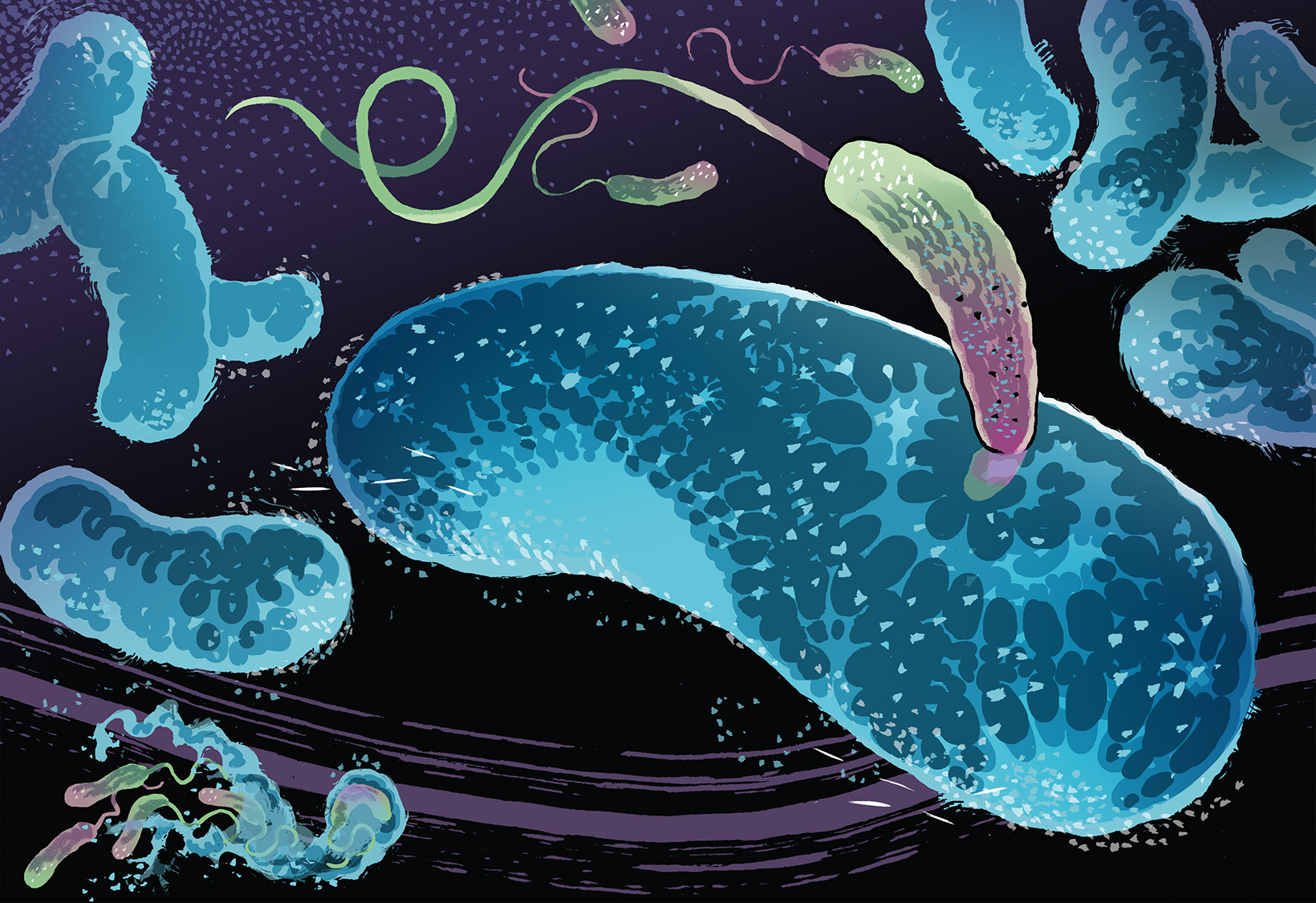EUU Researchers Explore the Potential of Predatory Bacteria as Antibiotics
The escalating challenge of antibiotic resistance in bacterial infections has driven microbiologist Simona Huwiler to investigate a novel approach: the utilization of predatory bacteria as a potential antibiotic solution.

[Montreux, 03 Jun 2023[
This groundbreaking research seeks to address the critical issue of bacterial resistance and revolutionize antibiotic development.
Nature's Antibiotic Alternatives
The relentless expansion of antibiotic-resistant bacteria poses a formidable threat to healthcare systems worldwide. With the scarcity of new antibiotics capable of combating drug-resistant strains, scientists are turning to nature for alternative solutions. Among these solutions are the natural enemies of pathogenic bacteria, including bacteriophages (viruses that target bacteria) and predatory bacteria capable of attacking, consuming, and eliminating other bacterial species. Bdellovibrio bacteriovorus, a predatory bacterium, is of particular interest to researchers due to its predilection for gram-negative bacteria with antibiotic resistance—a vital characteristic that distinguishes it from bacteriophages, which typically focus on specific bacterial species.
Simona Huwiler's Pioneering Research
Microbiologist Simona Huwiler is currently spearheading a research project supported by the Fund for Promoting Young Academic Talent (FAN) to explore the potential of B. bacteriovorus. While scientists have known about B. bacteriovorus for over six decades, the microorganism has regained prominence in the context of the antibiotic crisis. Huwiler's introduction to predatory bacteria occurred at a conference, followed by hands-on laboratory experience during her postdoctoral studies at the University of Nottingham.
A Versatile Tool for Researchers
B. bacteriovorus is abundant and can be found in soil, wastewater, and rivers. It stands out as an exemplary predatory bacterium, offering researchers a genetic toolkit to modify bacterial strains. Moreover, this predator exhibits the ability to target various gram-negative bacteria commonly associated with hospital-acquired infections. "Concrete applications make the research highly compelling," notes Huwiler.
Understanding Predatory Bacteria in Action
Simona Huwiler's laboratory investigations unveil the mechanisms behind B. bacteriovorus's predatory behavior. Under a microscope with 100x magnification, Huwiler demonstrates the bacterium's assault on E. coli. The process begins with the transfer of a laboratory strain of E. coli onto a glass slide, followed by the introduction of predatory bacteria. Under the microscope's lens, E. coli cells drift sluggishly in the liquid, while predatory bacteria dart around rapidly, akin to persistent flies on a summer evening. Some predatory bacteria attach themselves to E. coli cells using a rope-like structure, drawing both the predator and prey closer—an enthralling spectacle, according to Huwiler.
Potential for Antibiotic Development
The key phase of interest for Huwiler lies in the predator bacterium's entry and exit strategies. She posits that the tools and mechanisms used by predatory bacteria to penetrate cell walls might serve as a new type of antibiotic. During her postdoctoral fellowship at the University of Nottingham, her team, in collaboration with Andrew Lovering, uncovered a specific enzyme—modified lysozyme—as partially responsible for creating openings in prey bacteria's cell walls. Huwiler believes that these strategies could potentially be harnessed as a new form of "medication" against infectious diseases.
Unveiling Resistance
A critical question looms: can prey bacteria develop resistance to predatory bacteria akin to antibiotic resistance? Huwiler is currently delving into this query in her FAN-funded experiments, conducted in collaboration with postdoctoral student Subham Mridha and biomedicine professor Rolf Kümmerli. Although animal studies have indicated tolerability when using B. bacteriovorus against disease-causing bacteria, Huwiler is probing the emergence of resistance—an area with limited documented evidence. The experimental design ensures prey bacteria have a chance to develop resistance, a crucial consideration from an evolutionary biology perspective.
Living Antibiotics of the Future
Huwiler's experiments encompassed exposing eight different E. coli prey populations to predatory bacteria 15 times, followed by recovery phases without predators. Subsequent sequencing of prey population genes before and after experimentation, along with control groups, aims to unravel changes, including potential resistance development. These findings promise valuable insights into the interaction dynamics between predator and prey bacteria, essential for future applications of predatory bacteria as living antibiotics or sources of innovative medications.
Last updated: 2023-05-04

